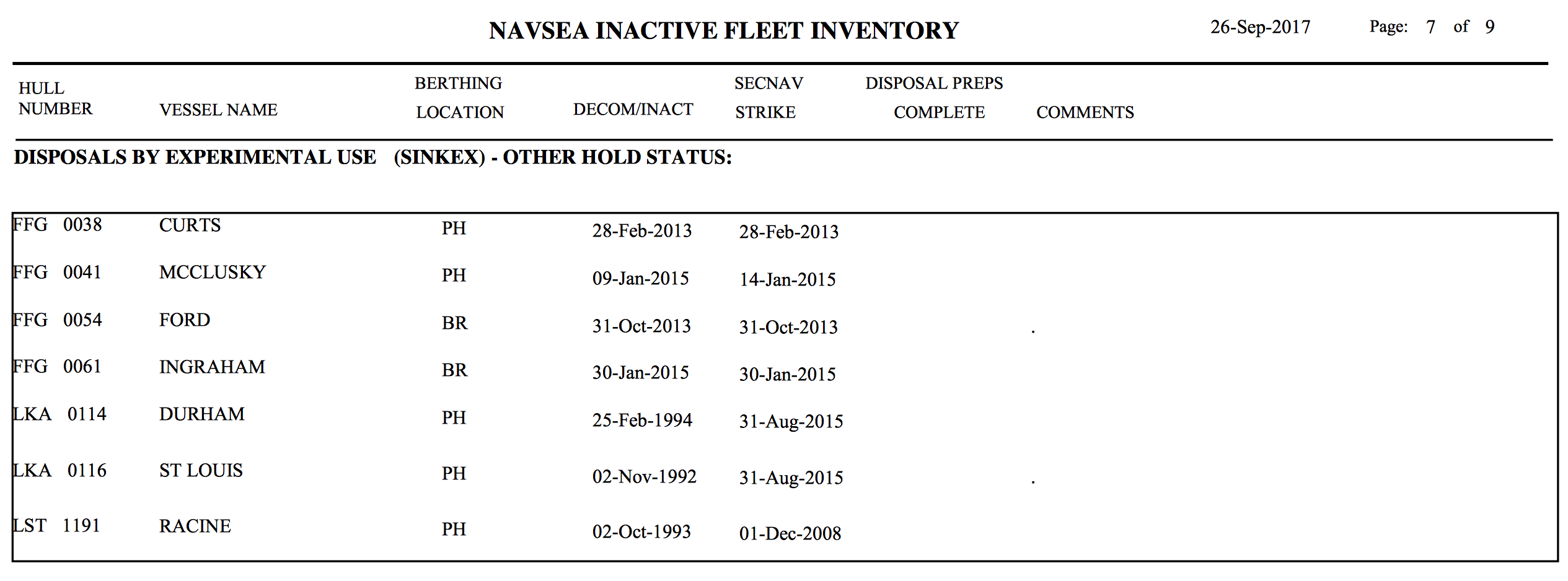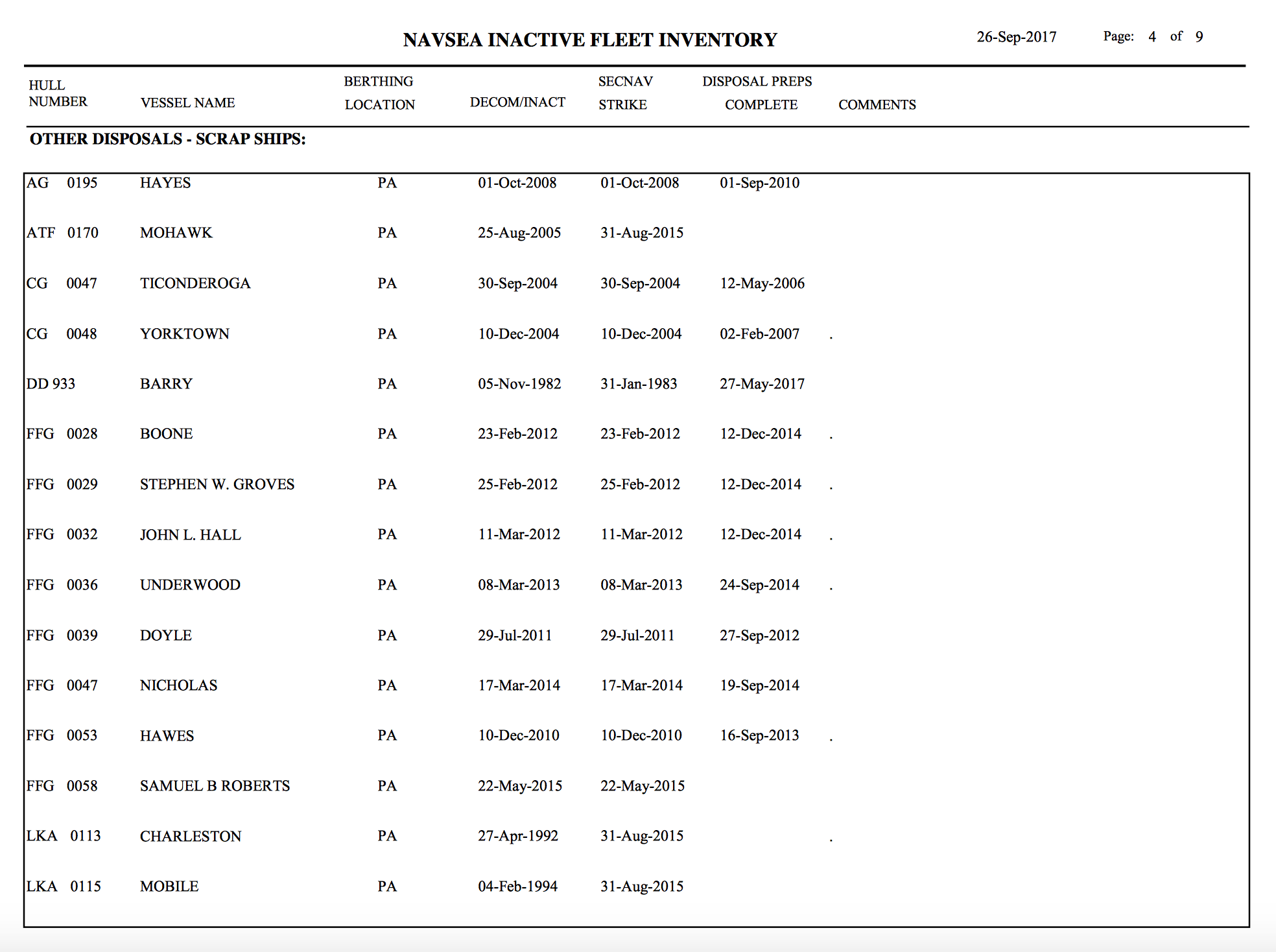The USS
Ingraham (FFG-61) and the USS Ford (FFG-54) are set aside to be sunk during sinking exercises (SINKEX), and Ford could be bombed, torpedoed, and shot until it succumbs to its watery grave as soon as this fall for Valiant Shield 2018. Both ships are among the youngest Oliver Hazard Perry classfrigates currently in the Navy’s mothball fleet, both having been retired between three and four years ago. Ingraham in particular is the last of the class built in the United States, having been commissioned in 1989.
Both of the vessels call Bremerton home as they silently await their destruction. Five other vessels have been set aside for SINKEX duties as well, including two Charleston class amphibious cargo ships, a Newport class amphibious landing ship, and two older Perry class frigates.

Ingraham and Ford, along with the two other FFGs set aside for SINKEX drills are joined by another ten Perry class frigates set aside for foreign sales, the majority of which are older.

There are another eight Perry class frigates set aside for scrapping.

Using retired vessels for sinking exercises is widely beneficial. Not only are they the best training various maritime warfare crews can get, but they are also key in gathering critical data on the real-world effects of various weapon systems and how various parts of a vessel perform against actual kinetic attacks.
Perry class frigates are particularly attractive targets for SINKEX because they were built very stout and can handle an unbelievable amount of damage before sinking. In fact, even after being pummeled by subsurface, surface, and aerial weapons, explosive charges still may be needed to send the ship to the seabed.


But sinking two of the youngest of the Perry fleet seems nearsighted especially as the Navy struggles to come up with a plan to realize its 355 ship fleet goal. There were high hopes that a number of Perry class frigates—at least seven hulls—could be returned to service even if just for low-threat environment operations, such as drug interdiction or anti-piracy operations. Meanwhile some have argued for the ships to receive modern upgrades like their counterparts that still serve with allied navies around the world.

In the end the Navy brass decided to do nothing with the Perry fleet—an unsurprising move considering the service’s obsession with buying new ships and high-end technologies over maintaining the vessels it already has. Shipbuilding politics and congressional pork also play a major factor in such decisions as well. Making matters more concerning is that when you look at the Navy’s fiscal justification for deciding to sink, chop up, or sell off the frigates for next to nothing to allies instead of putting put back to work for the United States, it just doesn’t add up.
Regardless of the Navy’s decision as it sits now not to regenerate the Perry class, as foreign transfers, the scrappers torch, or torpedoes and anti-ship missiles take more of these ships out of the reserve fleet, the Navy will have a dwindling parts source if they were to decide to change course and reintroduce the ships into fleet in one role or another—even during a major crisis. Additionally, one has to wonder why some of the youngest retired frigates need to be used as targets instead of much older ones that are already set aside for scrapping.

Such a plan also calls into question the viability of the Navy’s ever shrinking reserve fleet in the first place, especially during a time of supposed “great power competition” between the United States and peer states like Russia and China. Considering it takes many years to build a ship, retaining a sizable force of Perry class frigates in reserve, on which modular weapon systems could bolted during a time of need, seems like a good if not wholly necessary insurance policy to have.
Contact the author: Tyler@thedrive.com
